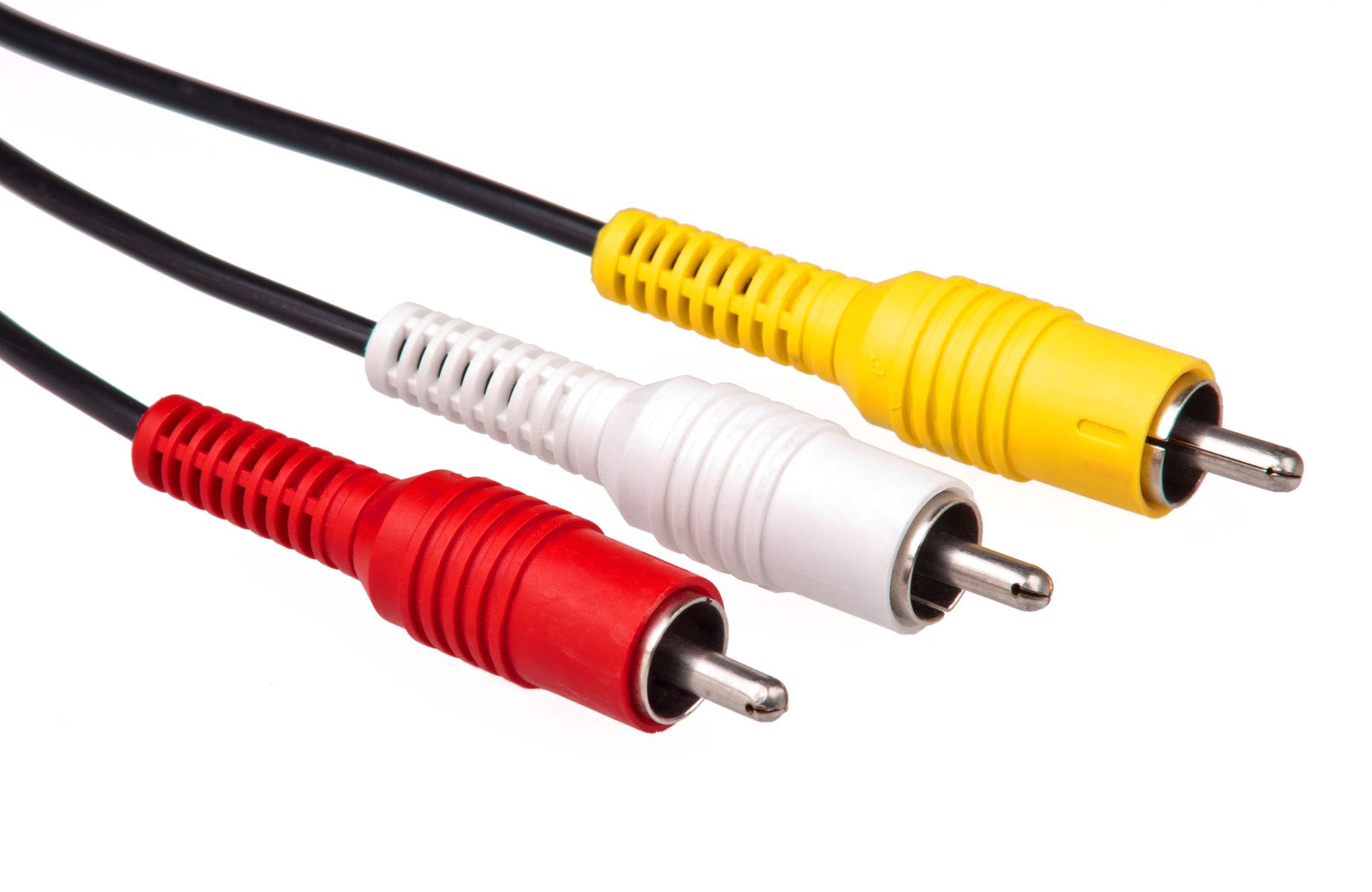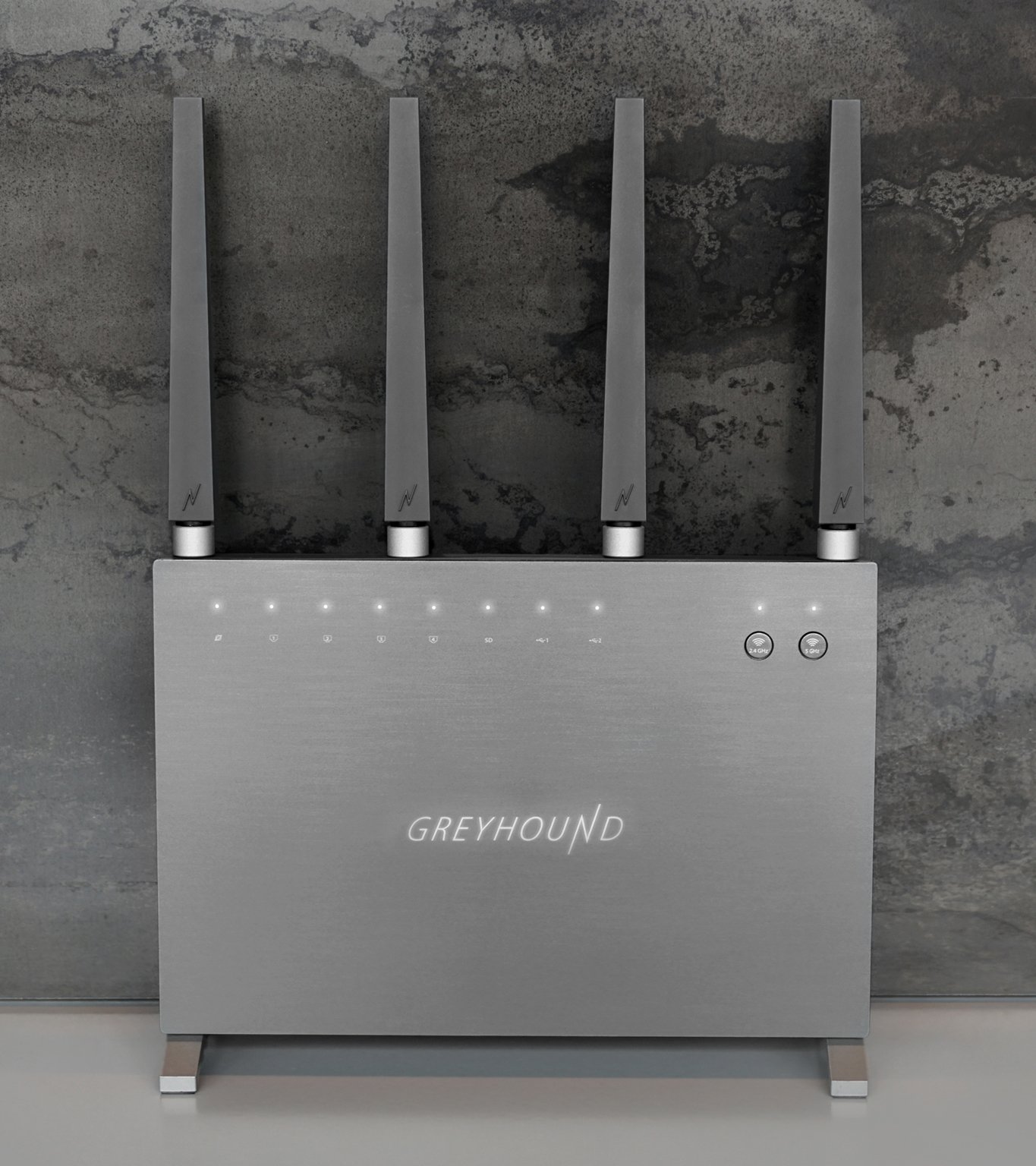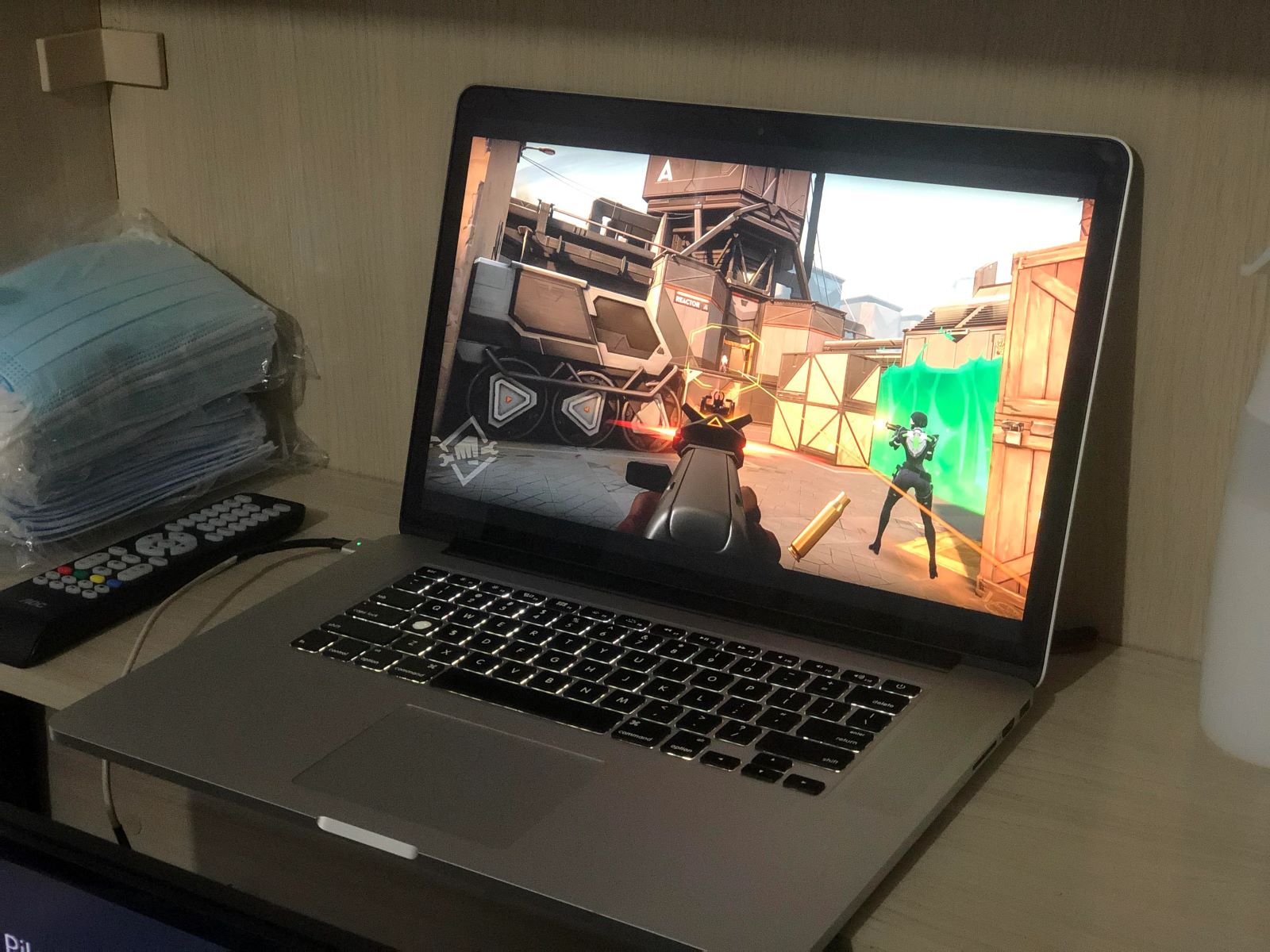Home>Technology and Computers>Unleash The Power Of The Red, White, And Yellow Cable Connection!


Technology and Computers
Unleash The Power Of The Red, White, And Yellow Cable Connection!
Published: February 8, 2024
Discover the potential of the red, white, and yellow cable connection for your technology and computer needs. Unleash the power and optimize your experience today!
(Many of the links in this article redirect to a specific reviewed product. Your purchase of these products through affiliate links helps to generate commission for Regretless.com, at no extra cost. Learn more)
Table of Contents
Introduction
The red, white, and yellow cable connection, also known as the composite or RCA connection, has been a staple in audio-visual setups for decades. This tried-and-true method of transmitting audio and video signals has stood the test of time, proving its reliability and versatility across a wide range of devices.
Whether you're a seasoned tech enthusiast or a newcomer to the world of home entertainment, understanding the red, white, and yellow cable connection is essential. These cables have been instrumental in connecting devices such as DVD players, gaming consoles, VCRs, and older television sets, providing a simple yet effective way to enjoy multimedia content.
In this comprehensive guide, we will delve into the intricacies of the red, white, and yellow cable connection, exploring its setup, troubleshooting, and the myriad advantages it offers. By the end of this journey, you will gain a newfound appreciation for this classic method of audio-visual connectivity and be equipped with the knowledge to harness its full potential.
So, buckle up and get ready to unlock the power of the red, white, and yellow cable connection. Whether you're looking to set up a retro gaming console, connect a VCR to your TV, or simply explore the versatility of this classic connection method, this guide has got you covered. Let's embark on this enlightening exploration of the red, white, and yellow cable connection and discover the magic it brings to your home entertainment setup.
Understanding the Red, White, and Yellow Cable Connection
The red, white, and yellow cable connection, also known as the composite or RCA connection, serves as a fundamental method for transmitting audio and video signals between various electronic devices. Each color within this trio of cables plays a distinct role in delivering a seamless multimedia experience.
The Red Cable
The red cable, often designated as the right audio channel, carries the audio signal for the right audio channel of the connected device. This channel is responsible for delivering the audio elements that are intended for the right side of the stereo sound spectrum, providing a balanced and immersive auditory experience.
The White Cable
In contrast, the white cable functions as the left audio channel, transmitting the audio signal for the left audio channel of the device. Together with the red cable, the white cable ensures that the full stereo audio output is faithfully delivered, enriching the overall sound quality and depth of the audio experience.
The Yellow Cable
The yellow cable is dedicated to video transmission, delivering the composite video signal from the source device to the display. This signal carries the complete visual information, including color and brightness, allowing for the seamless rendering of video content on the connected display.
Compatibility and Versatility
The red, white, and yellow cable connection has been a ubiquitous feature in the realm of home entertainment, offering broad compatibility with a myriad of devices. From classic VCRs and gaming consoles to DVD players and older television sets, this connection method has been the go-to choice for linking audio-visual components.
Simplified Connectivity
One of the key advantages of the red, white, and yellow cable connection lies in its simplicity. With color-coded cables and corresponding input/output ports on devices, setting up this connection is straightforward and intuitive, making it accessible to users of all technical proficiencies.
Legacy of the Composite Connection
Despite the advancements in digital audio-visual interfaces, the red, white, and yellow cable connection continues to hold relevance in modern setups. Its enduring legacy is evident in its widespread adoption and the nostalgic charm it brings to vintage electronics enthusiasts.
Understanding the intricacies of the red, white, and yellow cable connection unveils the foundational principles of audio-visual connectivity, highlighting its enduring significance in the ever-evolving landscape of home entertainment technology. Whether used for its simplicity, compatibility, or nostalgic appeal, this classic connection method remains a steadfast pillar in the realm of multimedia connectivity.
Setting Up Your Red, White, and Yellow Cable Connection
Setting up your red, white, and yellow cable connection is a straightforward process that lays the foundation for a seamless audio-visual experience. Whether you're connecting a DVD player to a television, hooking up a gaming console, or integrating a VCR into your setup, the following steps will guide you through the process with ease.
-
Identify the Input and Output Ports: Begin by identifying the corresponding input and output ports on the devices you intend to connect. Most devices feature clearly labeled ports, with the red, white, and yellow color-coding ensuring intuitive matching between the cables and ports.
-
Connect the Cables: With the devices powered off, carefully insert the red, white, and yellow cables into their respective output ports on the source device. Ensure a secure connection to prevent signal interference or disconnection during use.
-
Match the Input Ports: On the receiving device, such as a television or display monitor, locate the input ports for the red, white, and yellow cables. Match the colors of the cables to the corresponding input ports, ensuring a snug fit to maintain signal integrity.
-
Power On and Select Input Source: Once the cables are securely connected, power on the devices and navigate to the input/source selection menu on the receiving device. Choose the input source associated with the red, white, and yellow cable connection to initiate the signal transfer.
-
Adjust Display Settings: Depending on the connected devices, you may need to adjust the display settings to optimize the visual output. This may involve selecting the appropriate display mode, aspect ratio, or resolution to ensure the best viewing experience.
-
Test the Connection: Play a multimedia source on the connected device to verify the functionality of the red, white, and yellow cable connection. Ensure that both audio and video signals are transmitted accurately, and make any necessary adjustments to the setup if needed.
By following these simple yet crucial steps, you can set up your red, white, and yellow cable connection with confidence, knowing that your audio-visual components are seamlessly integrated. Whether you're embarking on a nostalgic gaming session, enjoying classic movies on VHS, or exploring the retro charm of analog audio-visual technology, this setup process paves the way for an enriched multimedia experience.
From classic VCRs and gaming consoles to DVD players and older television sets, this connection method has been the go-to choice for linking audio-visual components.
Troubleshooting Your Red, White, and Yellow Cable Connection
Even with its straightforward setup process, occasional technical hiccups may arise when utilizing the red, white, and yellow cable connection. Understanding how to troubleshoot common issues ensures that you can swiftly address any disruptions to your audio-visual experience. Here are some troubleshooting steps to help you overcome potential challenges:
Check Cable Connections
The first step in troubleshooting your red, white, and yellow cable connection is to inspect the cable connections. Ensure that the cables are securely plugged into the input and output ports of the respective devices. A loose connection can lead to signal loss or distortion, impacting both audio and video output.
Verify Input Source Selection
If you encounter a blank screen or no audio output, double-check the input source selection on the receiving device. It's possible that the device is not set to the correct input channel associated with the red, white, and yellow cable connection. Navigate to the input/source selection menu and ensure that the appropriate input source is selected.
Assess Cable Integrity
Over time, cables may experience wear and tear, potentially leading to signal degradation. Inspect the red, white, and yellow cables for any signs of damage, such as fraying or exposed wires. If any cables appear compromised, consider replacing them with new ones to restore optimal signal transmission.
Read more: Unleashing The Power Of File Extraction
Power Cycle the Devices
Performing a power cycle on the connected devices can resolve intermittent issues. Turn off both the source and receiving devices, disconnect the power cables, and wait for a few minutes before reconnecting and powering them back on. This process can reset the devices and eliminate temporary glitches affecting the cable connection.
Audio/Video Settings Adjustment
In some cases, mismatched audio or video settings on the connected devices can lead to distorted output. Access the device settings menus to ensure that the audio output channels and video display settings are configured correctly. This includes checking the audio channel balance and the video output resolution to align with the capabilities of the connected devices.
By following these troubleshooting steps, you can address common issues that may arise when using the red, white, and yellow cable connection. Whether you're troubleshooting audio distortion, video display problems, or intermittent signal loss, a systematic approach to identifying and resolving these issues ensures a seamless and enjoyable multimedia experience.
Advantages of Using the Red, White, and Yellow Cable Connection
The red, white, and yellow cable connection, despite being a traditional analog method, continues to offer a host of advantages that make it a compelling choice for audio-visual connectivity in various scenarios. These advantages encompass compatibility, simplicity, and the unique characteristics that contribute to its enduring relevance in modern home entertainment setups.
Broad Compatibility
One of the standout advantages of the red, white, and yellow cable connection is its broad compatibility with a wide array of devices. From classic VCRs and gaming consoles to DVD players and older television sets, this connection method seamlessly integrates with a diverse range of audio-visual equipment. Its universal appeal transcends generations of electronic devices, making it an accessible and dependable choice for connecting legacy and contemporary components.
Read more: Unleashing The Sensual Power Of Taurus Venus
Simplicity and Intuitiveness
The red, white, and yellow cables, with their distinctive color-coding, embody a level of simplicity and intuitiveness that simplifies the setup process for users of all technical proficiencies. Unlike complex digital interfaces that may require specialized knowledge, the composite connection method allows for straightforward cable matching and hassle-free integration. This user-friendly approach ensures that individuals can effortlessly establish audio-visual connections without the need for advanced technical expertise, enhancing accessibility and ease of use.
Nostalgic Charm and Retro Appeal
Beyond its technical advantages, the red, white, and yellow cable connection carries a nostalgic charm and retro appeal that resonates with enthusiasts of vintage electronics. The tactile experience of handling analog cables, the warm visual aesthetics of composite video output, and the distinct audio characteristics of analog transmission evoke a sense of nostalgia and appreciation for the classic era of home entertainment technology. This nostalgic allure adds an emotional dimension to the audio-visual experience, appealing to those who seek to recapture the essence of bygone technological eras.
Cost-Effective Connectivity Solution
In a world where digital connectivity solutions often entail significant investments in specialized cables and compatible devices, the red, white, and yellow cable connection stands out as a cost-effective alternative. With its widespread availability, affordability, and compatibility with a multitude of devices, this analog connection method offers a budget-friendly approach to integrating audio-visual components. Whether setting up a retro gaming corner or connecting legacy audio-visual equipment, the cost-effectiveness of the composite connection makes it an attractive choice for enthusiasts and casual users alike.
Timeless Reliability
Despite the rapid advancement of digital audio-visual interfaces, the red, white, and yellow cable connection has stood the test of time, demonstrating its timeless reliability in transmitting audio and video signals. Its enduring functionality and resilience in diverse usage scenarios underscore its status as a dependable and enduring method of audio-visual connectivity. This reliability is particularly valuable in situations where compatibility with older devices or the need for a fallback connectivity option is paramount.
In summary, the red, white, and yellow cable connection offers a compelling array of advantages, ranging from broad compatibility and simplicity to its nostalgic charm, cost-effectiveness, and timeless reliability. Whether seeking to connect classic entertainment devices, indulge in retro gaming experiences, or embrace the emotional resonance of analog technology, this classic connection method continues to enrich home entertainment setups with its enduring appeal and practical benefits.
Conclusion
In conclusion, the red, white, and yellow cable connection, also known as the composite or RCA connection, stands as a testament to the enduring legacy of analog audio-visual technology. Its foundational role in transmitting audio and video signals has left an indelible mark on the landscape of home entertainment, offering a timeless method of connectivity that continues to resonate with enthusiasts and casual users alike.
Through this comprehensive exploration, we've gained a deeper understanding of the red, white, and yellow cable connection, unraveling its significance, setup process, troubleshooting methods, and the myriad advantages it brings to home entertainment setups. From its distinct color-coded cables representing audio and video signals to its seamless compatibility with a diverse range of devices, the composite connection method embodies simplicity, reliability, and a nostalgic charm that transcends technological generations.
As we reflect on the advantages of the red, white, and yellow cable connection, it becomes evident that its broad compatibility, user-friendly setup, nostalgic appeal, cost-effectiveness, and timeless reliability position it as a versatile and enduring choice for audio-visual connectivity. Whether fostering a retro gaming environment, connecting classic audio-visual equipment, or simply embracing the tactile experience of analog technology, this classic connection method continues to captivate users with its blend of practicality and emotional resonance.
Looking ahead, amid the rapid evolution of digital interfaces and high-definition multimedia standards, the red, white, and yellow cable connection maintains its relevance as a bridge between the analog past and the digital present. Its ability to seamlessly integrate with legacy devices and evoke a sense of nostalgia underscores its enduring appeal in a rapidly advancing technological landscape.
In essence, the red, white, and yellow cable connection serves as a conduit for not just audio and video signals, but also for the emotions and memories associated with classic home entertainment experiences. Its timeless qualities, combined with its practical advantages, position it as a cherished component of the home entertainment ecosystem, enriching the multimedia experiences of enthusiasts and casual users alike.
As we conclude this enlightening journey through the realm of the red, white, and yellow cable connection, we are reminded of its enduring significance and the enriching experiences it continues to facilitate. Whether embracing its simplicity, reveling in its nostalgic allure, or leveraging its universal compatibility, this classic connection method remains a steadfast symbol of audio-visual connectivity, transcending technological epochs to leave an indelible mark on the fabric of home entertainment.










